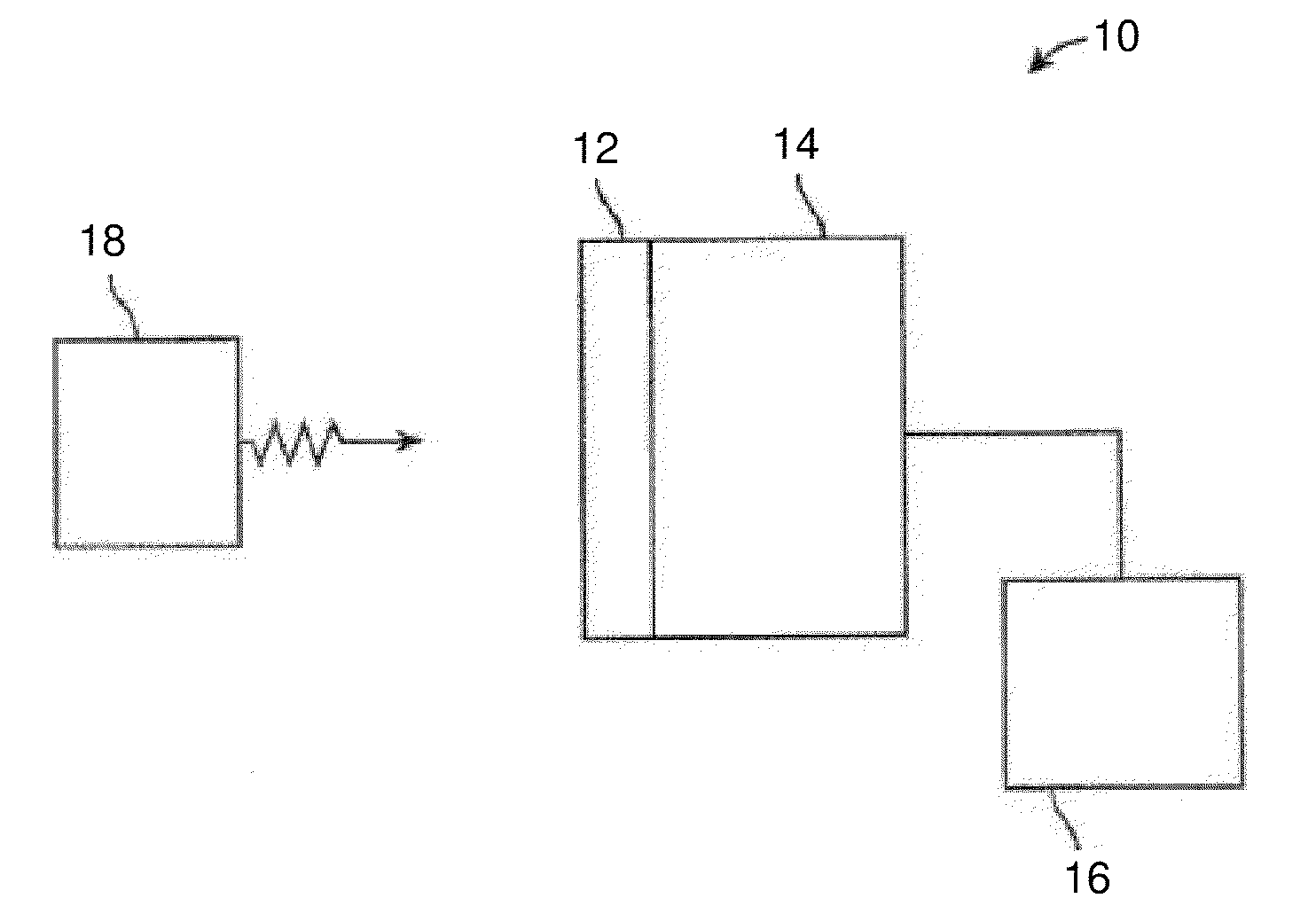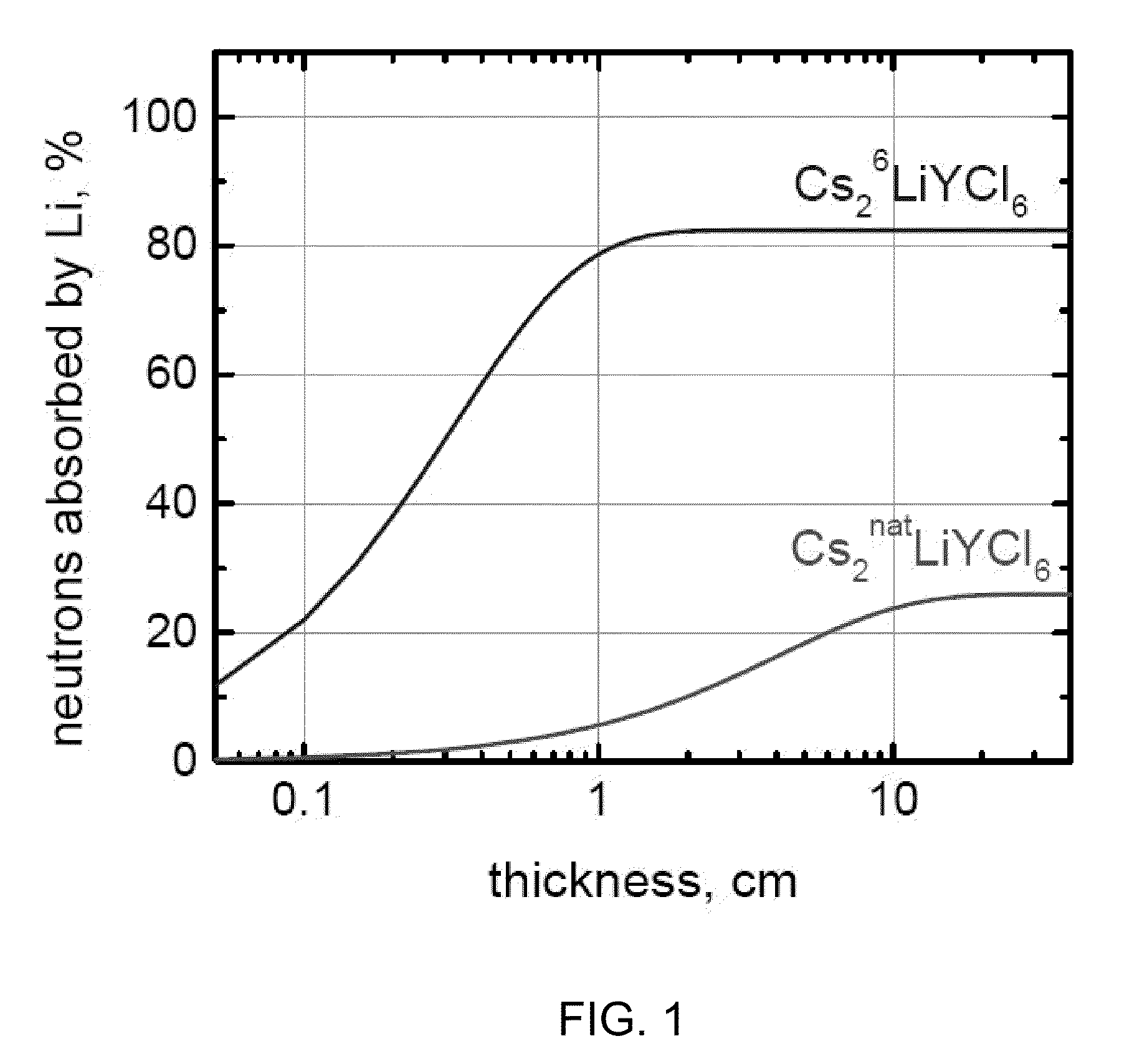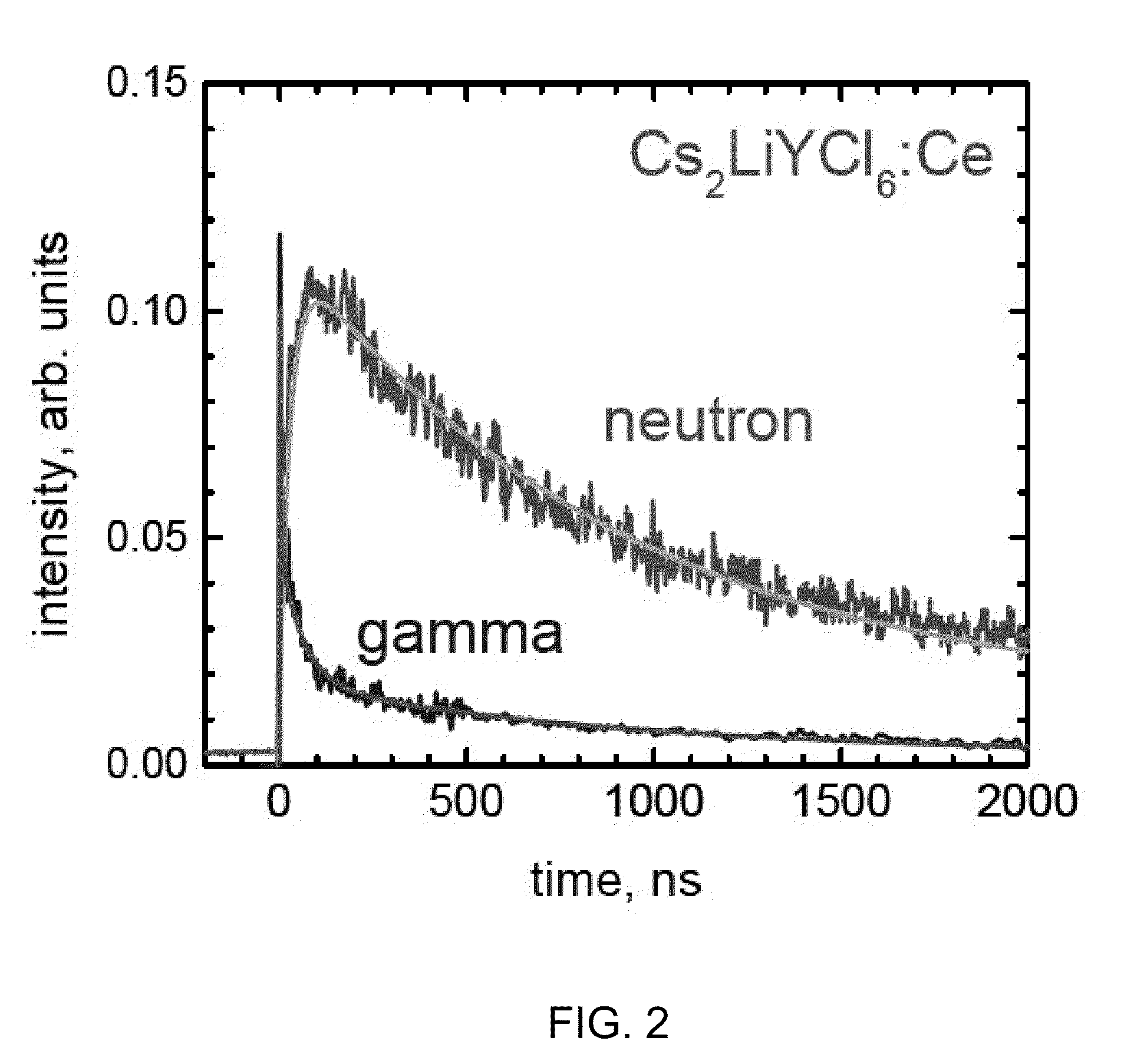CsLiLn HALIDE SCINTILLATOR
a technology of halide scintillator and composition, which is applied in the direction of photometry using electric radiation detectors, optical radiation measurement, instruments, etc., can solve the problems of difficult prediction of actual use of scintillator spectrometer and various practical applications, and the inability to meet the requirements on the whole by many commercially available scintillator compositions. achieve good energy resolution
- Summary
- Abstract
- Description
- Claims
- Application Information
AI Technical Summary
Benefits of technology
Problems solved by technology
Method used
Image
Examples
Embodiment Construction
[0027]This invention will be better understood with resort to the following definitions:
[0028]A. Rise time, in reference to a scintillation crystal material, shall mean the speed with which its light output grows once a gamma-ray has been stopped in the crystal. The contribution of this characteristic of a scintillator contributes to a timing resolution.
[0029]B. A Fast timing scintillator (or fast scintillator) typically requires a timing resolution of about 500 ps or less. For certain PET applications (e.g., time-of-flight (TOF)), the fast scintillator should be capable of localizing an annihilation event as originating from within about a 30 cm distance, i.e., from within a human being scanned.
[0030]C. Timing accuracy or resolution, usually defined by the full width half maximum (FWHM) of the time of arrival differences from a point source of annihilation gamma-rays. Because of a number of factors, there is a spread of measured values of times of arrival, even when they are all eq...
PUM
 Login to View More
Login to View More Abstract
Description
Claims
Application Information
 Login to View More
Login to View More - R&D
- Intellectual Property
- Life Sciences
- Materials
- Tech Scout
- Unparalleled Data Quality
- Higher Quality Content
- 60% Fewer Hallucinations
Browse by: Latest US Patents, China's latest patents, Technical Efficacy Thesaurus, Application Domain, Technology Topic, Popular Technical Reports.
© 2025 PatSnap. All rights reserved.Legal|Privacy policy|Modern Slavery Act Transparency Statement|Sitemap|About US| Contact US: help@patsnap.com



